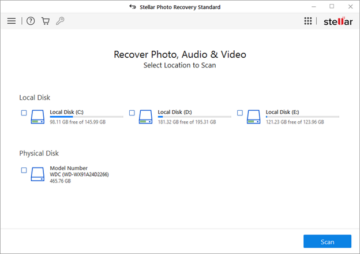
Data analytics has dramatically upended our lives. Most of the changes have been largely positive. One of the biggest implications of data analytics technology in the 21st Century is that it has led to a number of new cybersecurity solutions.
There is actually an entire field known as cybersecurity analytics, which as its name implies, uses data analytics technology to create more robust cybersecurity solutions. More cybersecurity professionals are employing it as they discover the importance of data analytics in stopping cyberattacks.
The majority of people are well aware of the benefits and dangers of the internet. In the past year, our dependence on the internet has only grown, even when we disregard the impact of the recent pandemic. Over 155 million people were impacted by cyberattacks all over the country. This increased dependence has forced many small businesses to direct their efforts to a shift to eCommerce. Cybercriminals have not only become bolder, but their methods have become much more sophisticated, and small businesses are more likely to become targets, as opposed to bigger companies.
Cybersecurity analytics is helping address these concerns. Businesses are using data analytics to mitigate the threats of cyber attacks as they become more prevalent.
Why Are Small Businesses at Greater Risk
Even when the importance of cybersecurity has been reiterated in the past, most small businesses do not have cybersecurity measures in place due to the erroneous belief that cybercriminals aren’t going to pay them any mind. This is an incorrect assumption, as small businesses are particularly attractive targets, not for the potential yield, but rather for the ease of exploiting the business and its lack of cybersecurity measures. In fact, 78% of small businesses are currently being targeted by cybercriminals.
Protective Measures with Data Analytics
Fortunately, small businesses can take advantage of this knowledge. Cybercriminals will likely underestimate their targets, which means that even the most basic of measures will drastically improve the cybersecurity of your small business.
Fortunately, there are some data analytics applications that can help small businesses respond. Here are some basic measures that can help:
Secure Your Networks
The first and best thing small businesses can do to drastically improve their security is to invest in a secure wireless framework. It’s especially important to find a framework that’s scalable so that the system can easily adapt to varying volumes of traffic. Once the internet of things becomes mainstream, this will drastically increase the vulnerabilities in every network.
Data analytics can help identify various weak points in your network. This makes it easier to fortify your defenses against cyber attacks.
Keep Systems Updated
Once you’ve established a secure network, it’s important to keep your computers and other devices up-to-date on security patches. Cybersecurity is essentially an arms race between cybercriminals and cybersecurity experts. Exploits are constantly being developed by hackers, while security experts are constantly patching up these vulnerabilities. Updating your systems also applies these security patches. Data analytics helps identify outdated software that needs to be rebooted.
Train Staff On Cybersecurity
Employees also play a significant role in cybersecurity, and they can either become a point of vulnerability, or they can aid in improving security depending on whether they are trained or not. Thankfully, there are many anti-phishing guides such as this that serve as a good foundation for what employees ought to look out for.
Data analytics can help streamline and perfect the training process. You can evaluate various metrics to see how employees are progressing in their cybersecurity training process.
Regulate Access to Physical Devices
Small businesses also need to place an emphasis on the physical aspect of cybersecurity by safeguarding their physical servers from unauthorized access. Cyberattacks can come from anywhere, even from within your business. Regulating the use and possession of portable storage devices is one way to manage risk. Using network monitoring tools is also highly recommended to help you detect anomalies should any of your measures fail.
This is an area where data analytics and AI can be especially helpful. You can use this technology to mitigate risks by restricting access with unsecure devices.
It’s also important to consider the direction the market is headed. Many upcoming technologies are going to operate on the internet, which means that cybersecurity will eventually be an issue for your business if it isn’t already. It’s going to be much better to set the foundations for the cybersecurity of your business before it becomes a problem.
- "
- access
- Ad
- ADvantage
- AI
- All
- analytics
- applications
- AREA
- Attacks
- auto
- BEST
- Biggest
- business
- businesses
- Companies
- computers
- content
- cyber
- cyberattacks
- cybercriminals
- Cybersecurity
- data
- Data Analytics
- Devices
- ecommerce
- employees
- experts
- First
- Framework
- good
- Guides
- hackers
- here
- How
- How To
- HTTPS
- identify
- Impact
- Increase
- Internet
- IT
- knowledge
- Mainstream
- Majority
- Market
- Metrics
- million
- monitoring
- network
- Other
- pandemic
- Patches
- Patching
- Pay
- People
- plugin
- possession
- professionals
- protect
- Race
- Risk
- security
- set
- shift
- small
- small business
- small businesses
- So
- Software
- Solutions
- Splunk
- storage
- system
- Systems
- Technologies
- Technology
- threats
- traffic
- Training
- Vulnerabilities
- vulnerability
- wireless
- within
- year
- Yield











